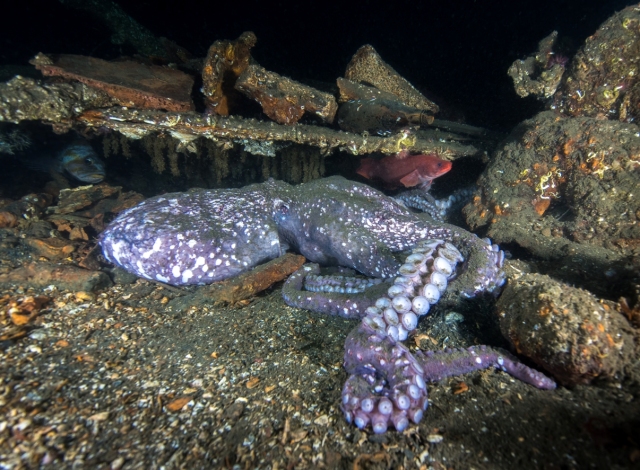[Much of this post reprinted from an article I wrote for the November 2015 Buoy Tender, the newsletter of the Marker Buoy Dive Club.]
I want to write an entire book about my dive experiences during the summer of 2015, the summer of cephalopods. But right now I am both in a hurry and baffled how to begin such an endeavor with so many possible topics. So for now I’ll keep it short and let the photos tell the tale — the tale of the-amazing-things-that-you-see-when-you-are-obsessed-with-giant-Pacific-octopus-paralarvae.
August 12. I started going to Three Tree North the day prior, doing early morning dives – splashing at 3:30am, to get in early-morning “night dives” waiting for, watching for, and trying to photograph the giant Pacific octopus hatchlings (paralarvae) as my schedule would allow. Turned out, going at that hour, water flat, stars out – was completely magical. Going solo at that hour, during my first such early-morning splash, I was more preoccupied with being there than the life around me, so I didn’t see much (and my first attempt at photographing the baby octopuses were failures). But by the second day, this day, Bob Bailey and I went, and I got a quick glance at juvenile opalescent squid as we descended. During the dive I saw a larval flatfish for the first time ever, and we also saw some hooded nudibranchs. (My paralarvae photos were still very bad, too.)
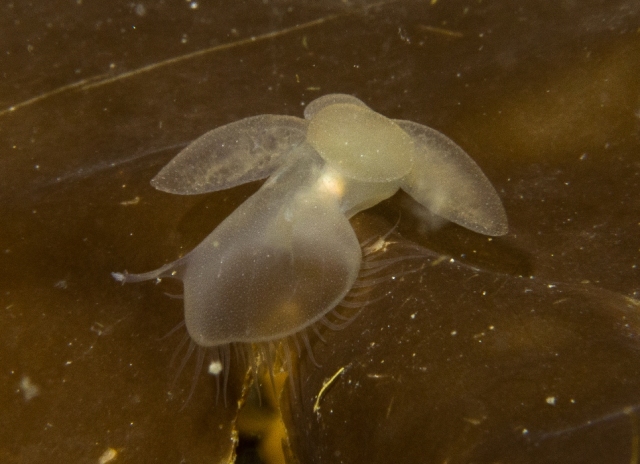
August 13. I returned for my third day in a row for a 3:30am splash at Three Tree North. The young squid greeted me again on the descent line, but I wasn’t ready with my camera. They were getting curiouser. On the way to the mama octopus den, all the fish seemed curious – what on earth has lights so bright at this hour? The ratfish came at me like a swarm. And then a vision: a dogfish followed its curiosity and approached me several times. So awesome!
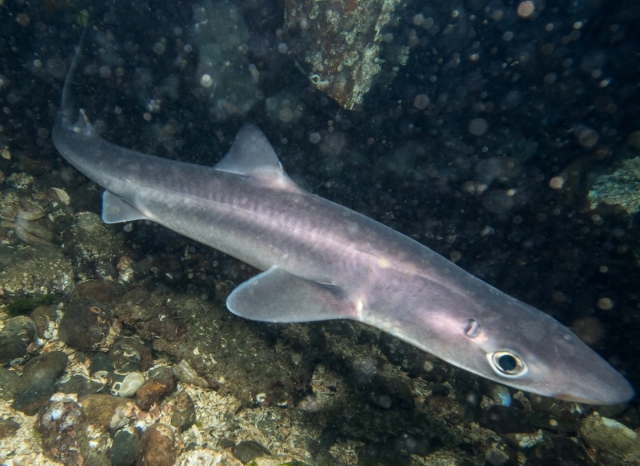
Later that dive, I came upon a pair of spawning opalescent squid. They too seemed curious about my light – or maybe they were just too into their mission of mating that they didn’t care about me. Either way, I watched them deposit their egg sac, and they watched me…intently. I also decided to teach myself about masking in Lightroom…
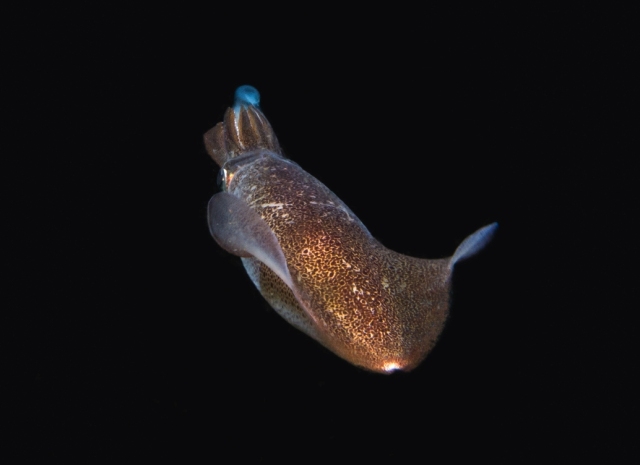
The water was full of gunk. But who cares? The squid didn’t.
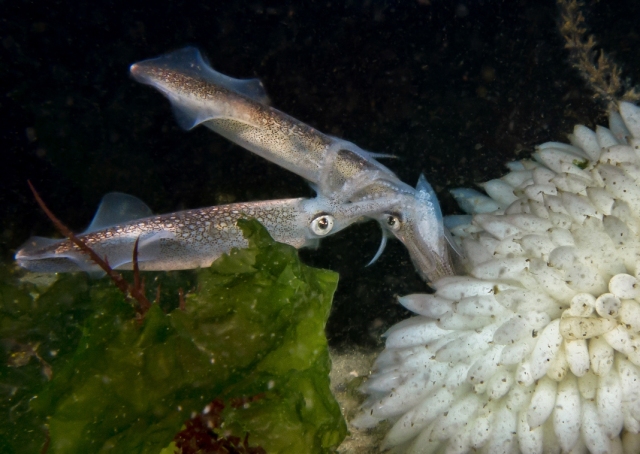
One more of the very curious squid. And me with my new Lightroom skills. (And by now, my octo baby photos were beginning to improve.)
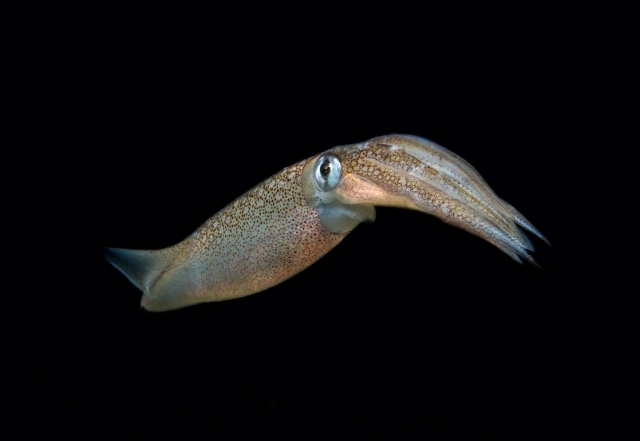
August 16. Finally, I was ready to photograph my squid baby friends on the descent at Three Tree. These little guys are maybe 2 inches long, and each time I descended at 3:30am, they were there. Each time, the experience was different. On this day, they seemed to be trying to show me they were not scared of me. Of course, all the ink they let out in clouds around me suggested otherwise.
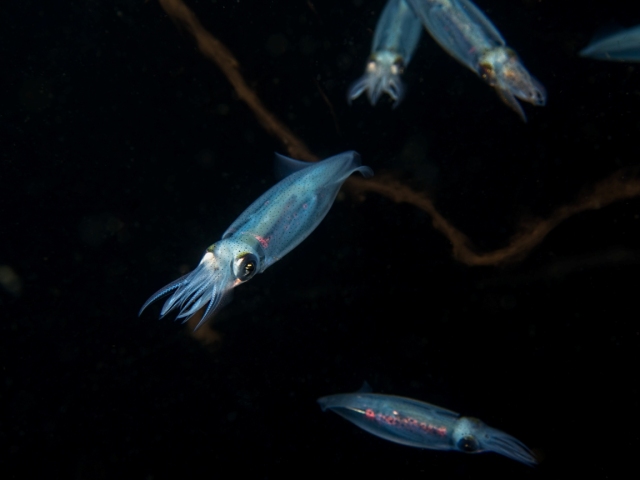
Current was stronger this day, and so much stuff blew by. Of course white-lined dirona are common, and gunk blowing by is common, but white-lined dirona blowing by – not so common.
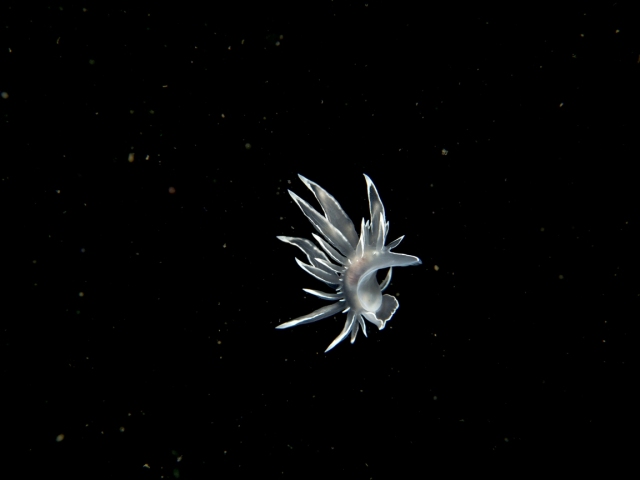
I think I have seen three total white-spotted greenling in my entire diving career, including this one. Yeah! Score.
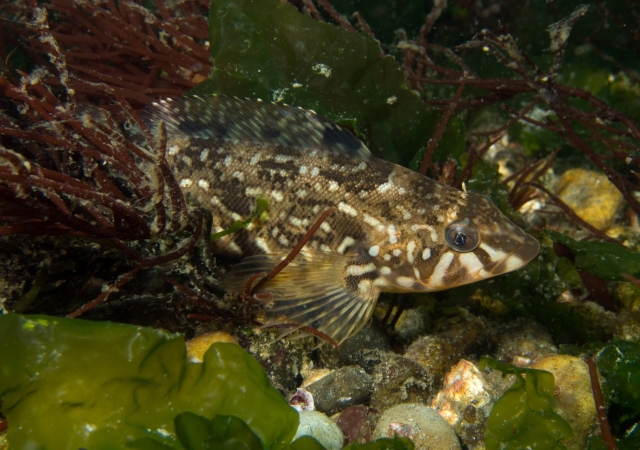
And if the white-spotted greenling wasn’t enough, this spiny lumpsucker was the cherry on top of the dive. Dives just don’t get much better than this. Except for all the other dives this month… and next month. And last month, actually.
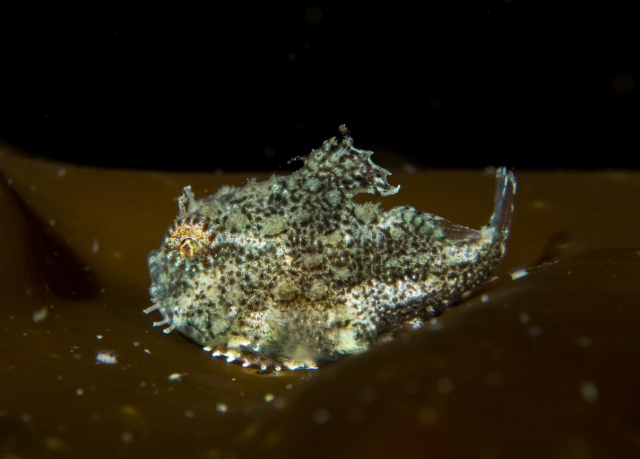
August 18. The juvie squid met me again on the descent and not only seemed to approach me with total curiousity, but they also produced an ink-out. The baby octopus were getting fewer and further between, so I knew this would be the last dive at Three Tree. At the end of the dive – another lumpsucker. After I finished this dive, I headed to Cove 2 to check on the octopus den there. By 7:30am, I’d done two dives in two different locations. Not a bad way to start a day!
After five days at Three Tree photographing baby giant Pacific octopuses just moments after they hatched out of their eggs and floated into the water as “paralarvae,” it turned out my best photos came on the fourth dive on August 16.
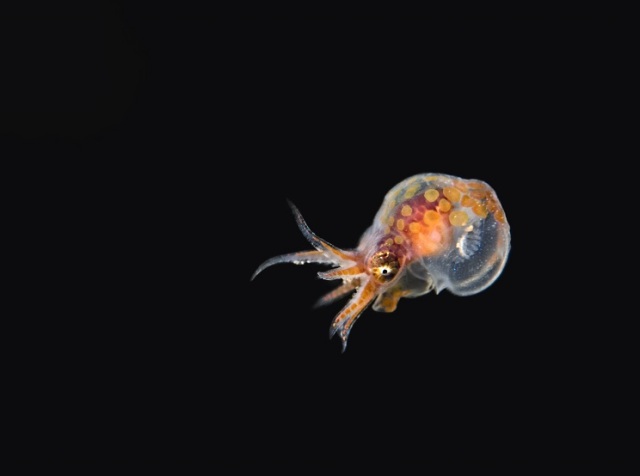
September 12. A month after these early morning dives began, and now the octopus dens at Cove 2 were hatching out. And I again roused early. I decided to try my 60mm macro lens on the first dive, and my 12-50mm on the second dive.
The sailfin sculpin had become common.
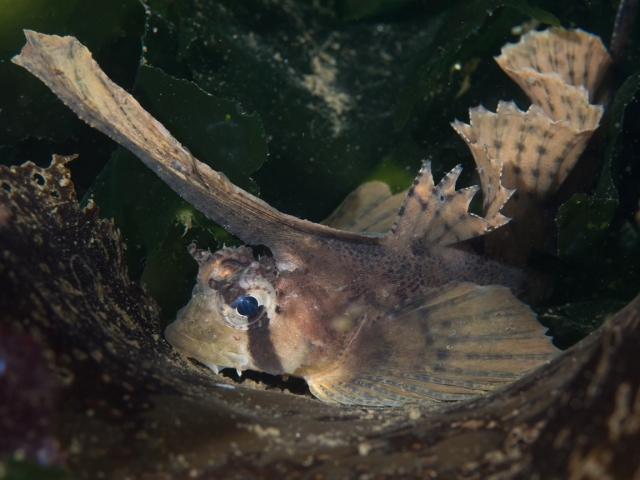
And yes, a wolf eel at Cove 2. Crazy, I know! As I type this post, this wolfie is still in this hole, and he is sure a shy one.
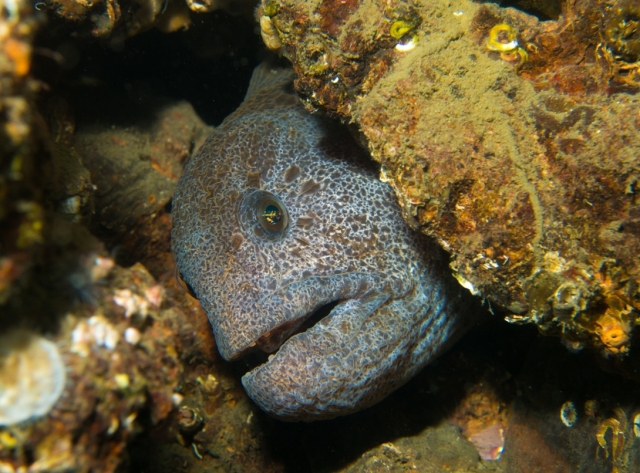
I visited the I-beams on the second dive and found one of my favorites, a decorated warbonnet.
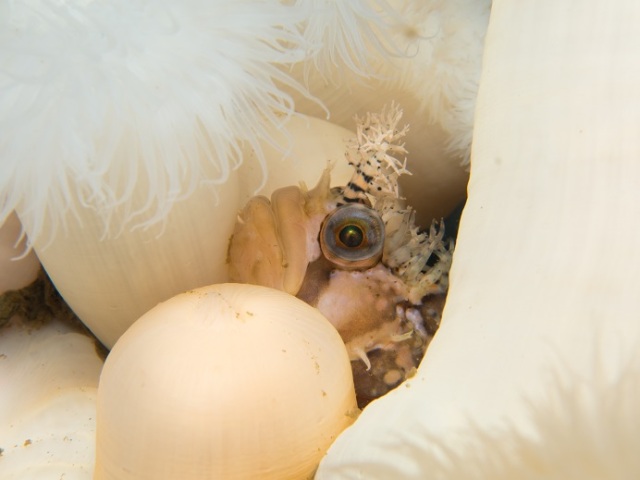
And there were still so so many other octopuses out and about that weren’t having babies yet.
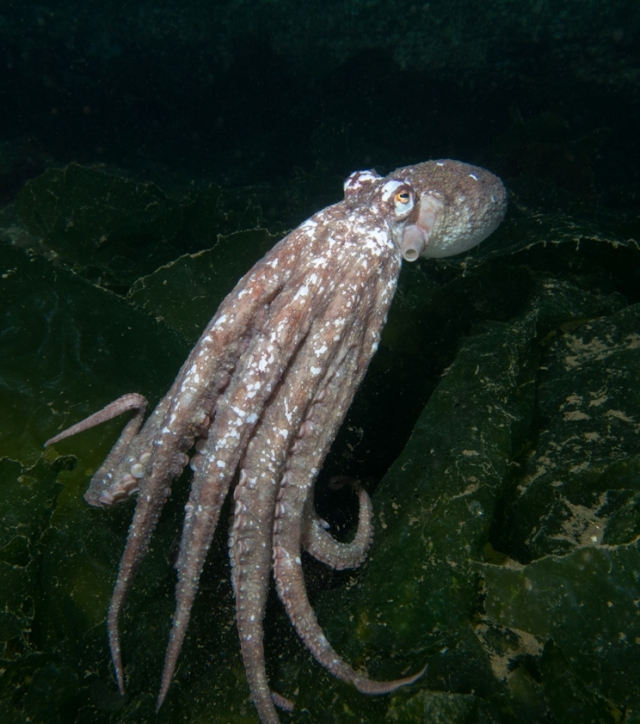
September 13. After checking on the well-visited octopus den, I swam to another den a little deeper. I’d visited it the day before to discover the female there had died, but babies were hatching like crazy. I went back on this day to see what might be happening, and while I was there, my flash died at the same time I noticed some eggs had been dragged outside the den and some of them were hatching. I did my best to use my Sola, and when I got home, I was stunned to see the various levels of hatching in the eggs. If you look closely, you will see some paralarvae half-way out the eggs, some still in the eggs, at least one that was dead after nearly hatching out, and of course one that was swimming freely away.
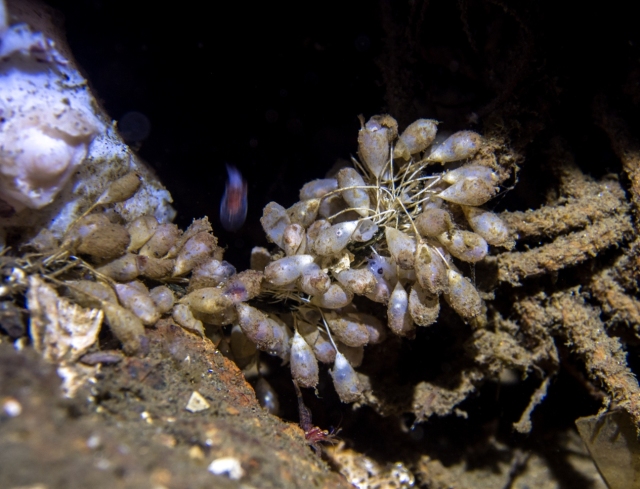
After this dive, I drove out to Carnation for the Beat the Blerch Half Marathon. They took the best photo ever of me crossing the finish line. I think it’s worth posting here.
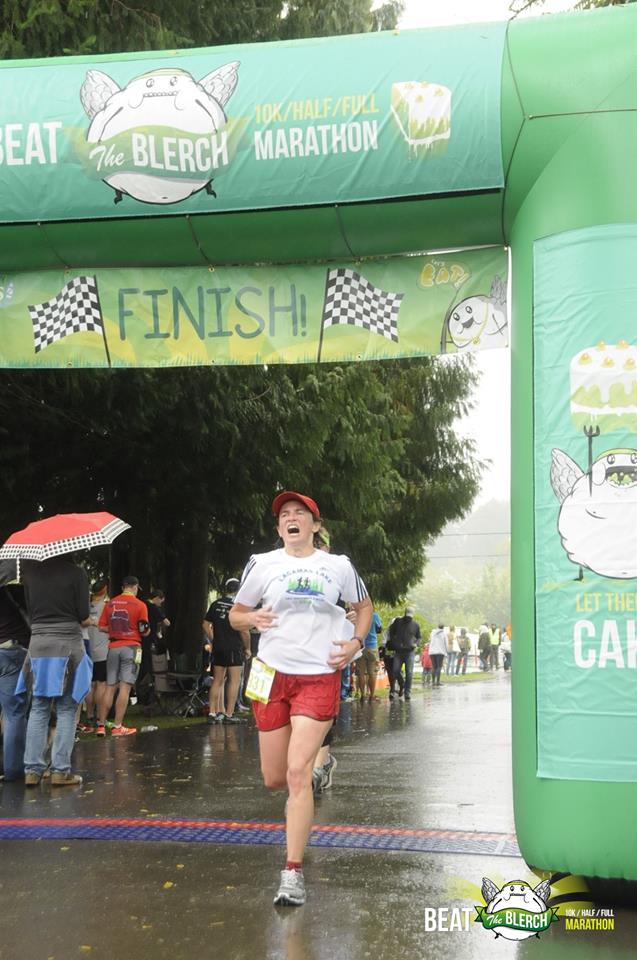
September 27. Anyway. On September 26 I had visited the main den at Cove 2 only to discover she had died. The timing of an octopus’s death is mind boggling — she lived only long enough to ensure the majority of her babies had hatched out successfully. After nine months of staying with them constantly, fanning the eggs with her arms to ensure they stayed free of muck so they would have proper oxygen transfer, and keeping predators at bay, she died within hours or moments of when they no longer needed her.
A few eggs were were still hatching, so I went back the following day before my half marathon up in Bellingham to see if any more baby octopus would still be there. I might have seen one or two, but while I was hanging out photographing the den for the last time, I could not have been more surprised when a red brotula swam out of the den… then back in… then out again. No big deal. Which is my way of saying: this was a really big deal! Hell of an ending to the summer of cephalopods.
